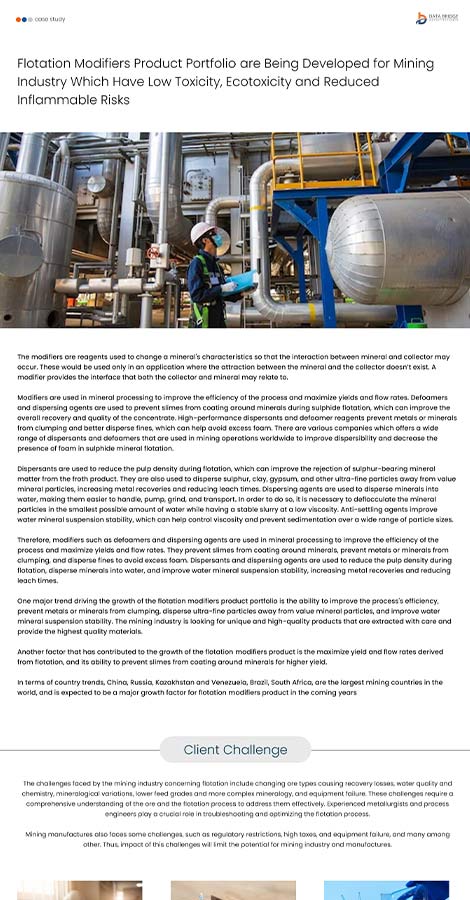The modifiers are reagents used to change a mineral's characteristics so that the interaction between mineral and collector may occur. These would be used only in an application where the attraction between the mineral and the collector doesn’t exist. A modifier provides the interface that both the collector and mineral may relate to.
Modifiers are used in mineral processing to improve the efficiency of the process and maximize yields and flow rates. Defoamers and dispersing agents are used to prevent slimes from coating around minerals during sulphide flotation, which can improve the overall recovery and quality of the concentrate. High-performance dispersants and defoamer reagents prevent metals or minerals from clumping and better disperse fines, which can help avoid excess foam. There are various companies which offers a wide range of dispersants and defoamers that are used in mining operations worldwide to improve dispersibility and decrease the presence of foam in sulphide mineral flotation.
Client Challenge
The challenges faced by the mining industry concerning flotation include changing ore types causing recovery losses, water quality and chemistry, mineralogical variations, lower feed grades and more complex mineralogy, and equipment failure. These challenges require a comprehensive understanding of the ore and the flotation process to address them effectively. Experienced metallurgists and process engineers play a crucial role in troubleshooting and optimizing the flotation process.
Mining manufactures also faces some challenges, such as regulatory restrictions, high taxes, and equipment failure, and many among other. Thus, impact of this challenges will limit the potential for mining industry and manufactures.
- Regulations and Guidelines: The mining industry is subject to numerous regulations and guidelines, including those related to labor, raw materials, production processes, and carbon emission. Implementing new techniques or methods may require careful consideration of regulatory compliance to ensure that the technique meets all necessary standards and safety measures
- Changing Ore Types Causing Recovery Losses: The mineralogy of the feed can change as the mine progresses through the ore body, which can cause losses in recovery. The flotation circuit can lose its optimized state, and recovery losses vary depending on the magnitude of mineralogical change and the ability of the operation to remain in optimal condition
- Water Quality and Chemistry: The composition of water used in flotation can significantly impact the process. High concentrations of impurities such as salts, heavy metals, or organic compounds can interfere with the interactions between minerals and bubbles, affecting the flotation efficiency. Additionally, pH, temperature, and dissolved oxygen levels can influence the performance of the process
- Mineralogical Variations: Variations in mineralogical characteristics within a deposit can pose flotation challenges. Different minerals may have varying flotation behaviors, and the presence of certain minerals (clay minerals, talc) can interfere with the flotation of valuable minerals, reducing their recovery
- Lower Feed Grades and More Complex Mineralogy: The mining industry is facing lower ore grades and more complex deposits. Extracting resources with minimum impact and with growing societal pressure on the mining industry to minimize environmental harm, the search for more sustainable and efficient technologies and practices is becoming increasingly important. Lower feed grades and more complex mineralogy can make extracting valuable minerals economically and with less environmental impact more challenging
Equipment Failure: Flotation is a widely used process in the mining industry to separate valuable minerals from gangue. However, several flotation issues can arise during this process, affecting its efficiency and effectiveness. Poor mineral liberation, insufficient grinding or crushing of the ore, and equipment failure can result in poor flotation performance.



